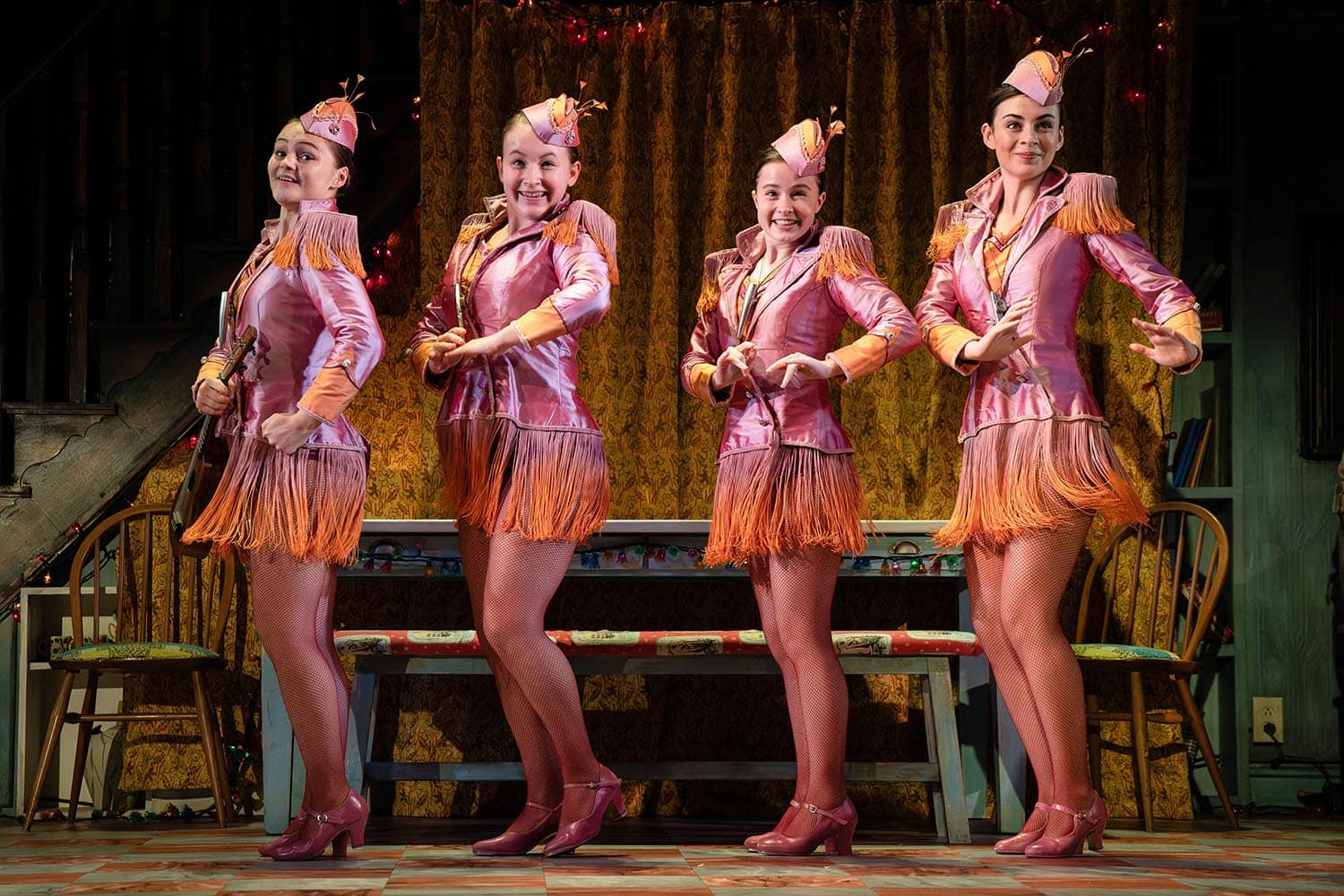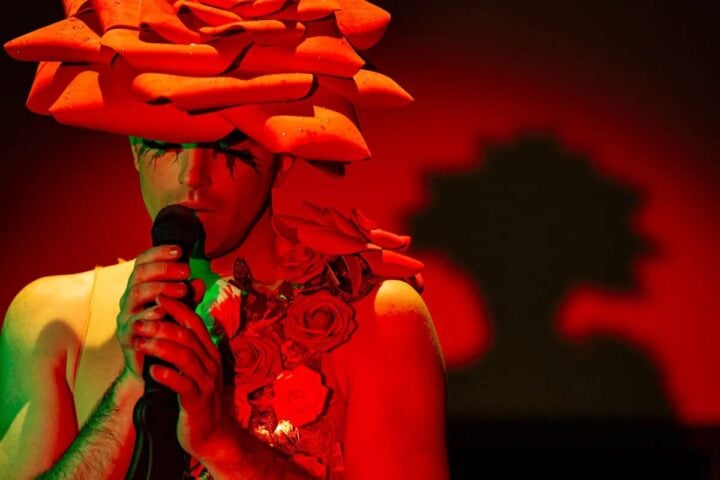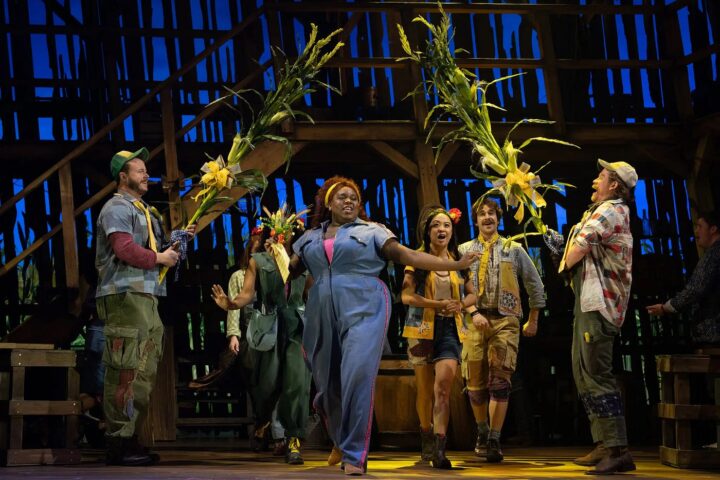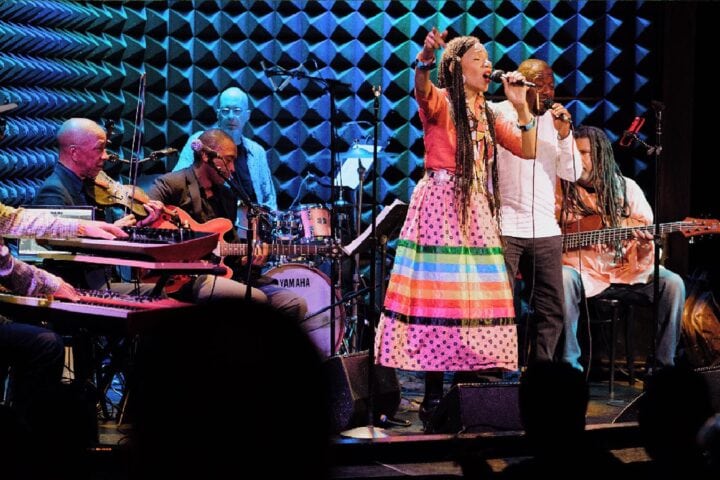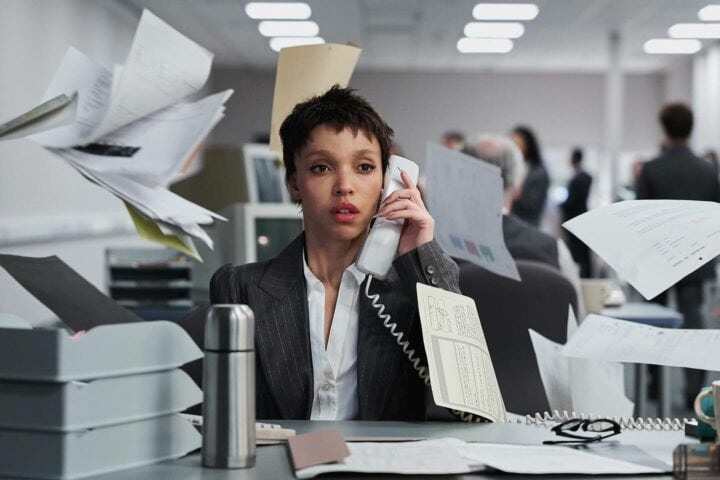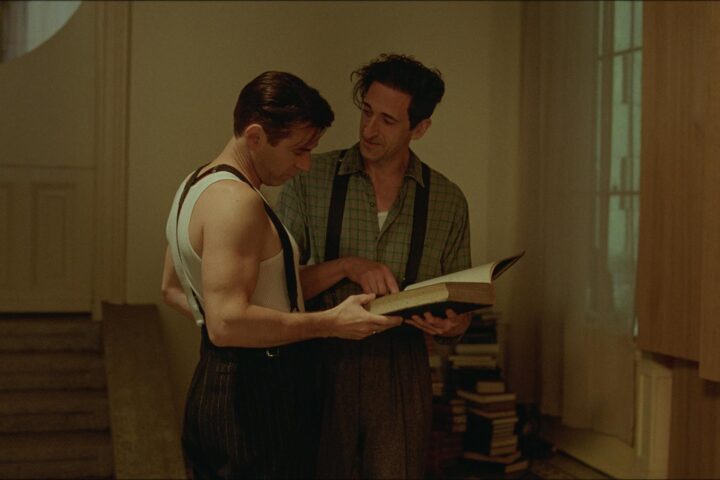The theater pieces that resonated most this year were stories of communal, collective healing—not quite feel-good but feel-connected. Curiously, several of the shows on this list staged emotional scenes of family reunifications. Seeking patterns as a critic, it’s tricky to separate the personal emotional response from trends in theatermaking, but it seems like audiences wanted catharsis in the theater in 2024. That was especially true for something like City Center’s Ragtime, which offered both an emotional indictment and hopeful vision of the nation that audiences sought out in the days following the election.
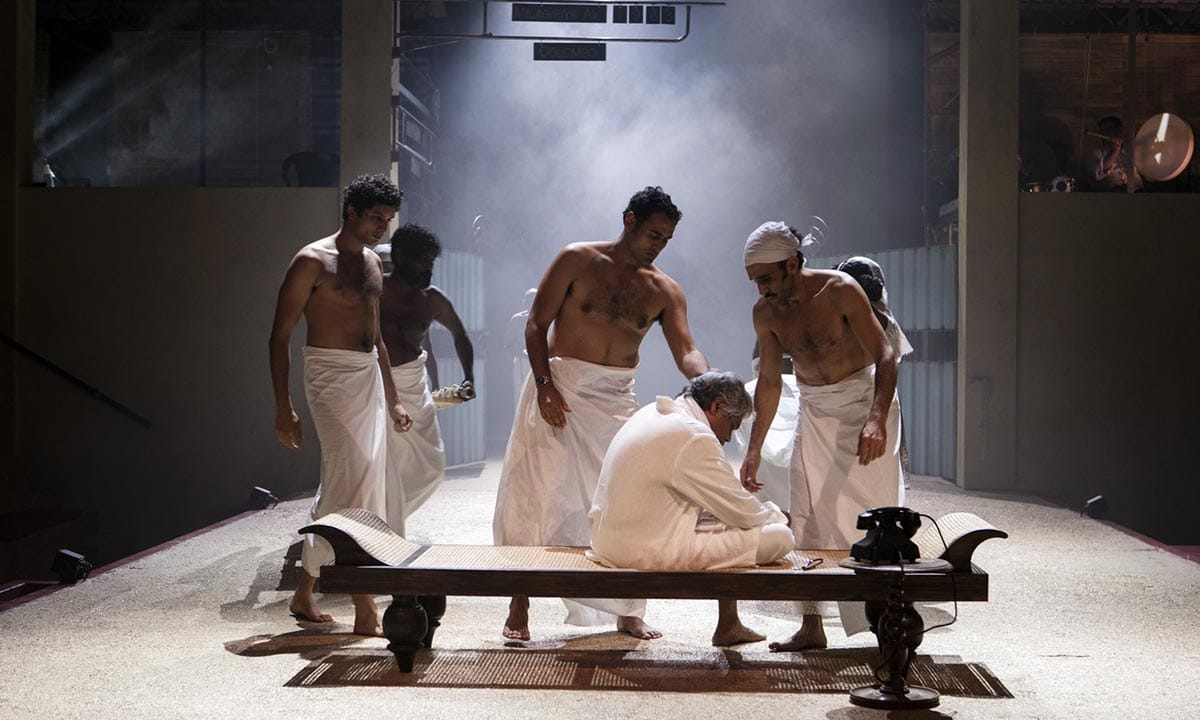
Counting and Cracking, NYU Skirball
S. Shakthidharan penned an epic in the true sense of the word: a three-and-a-half-hour play that spans half a century of Sri Lankan history, two continents, and multiple languages as it explores an Australian man’s journey to understand where he comes from. Director Eamon Flack playfully and powerfully deployed the large ensemble in ever-creative and surprising fashion. Counting and Cracking seldom held the audiences’ hands in covering a history of ethnic oppression—culminating in the play with the anti-Tamil pogrom known as Black July—that likely few New Yorkers know well. But even if following all the facts and timelines proved occasionally challenging, the play’s heartrending core, intermixed with the production’s gracious serving of whimsy (often thanks to the performance of Nadie Kammallaweera as a sternly funny mother), made Counting and Cracking a play accessible to anyone.
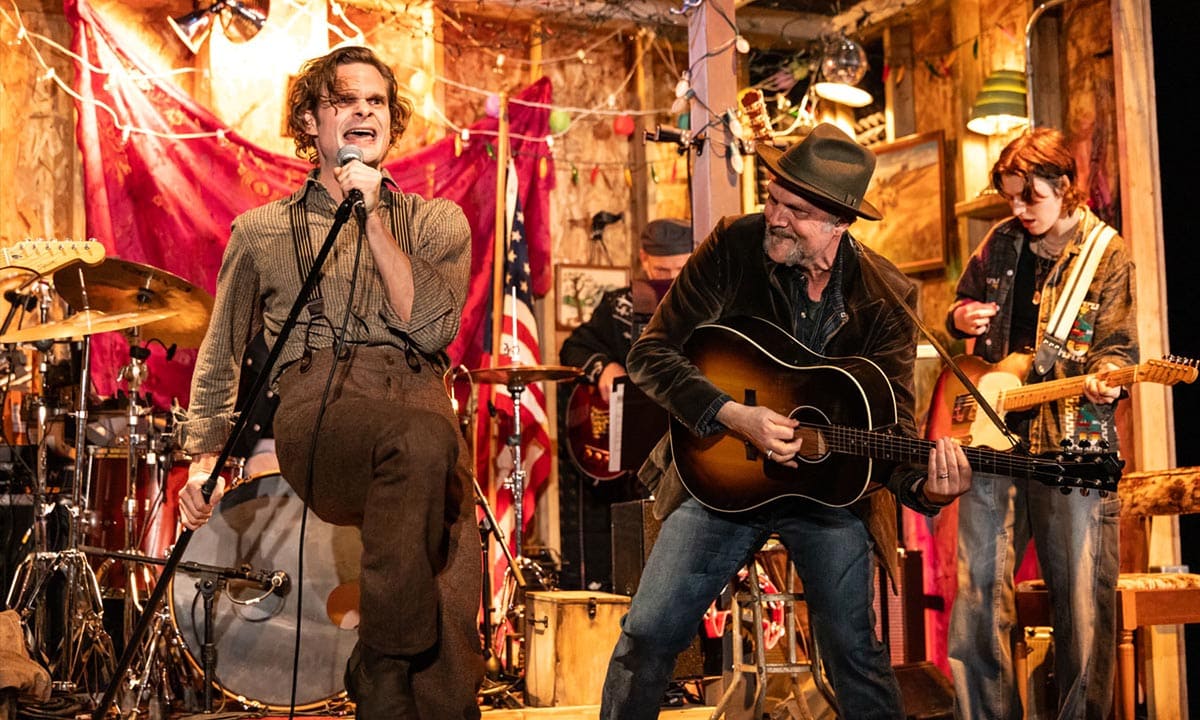
Dead Outlaw, Audible Theater
Elmer McCurdy made more friends in death than in life: After the outlaw died in a 1911 shootout during a train robbery, his corpse went on an odyssey from funeral home display to carnival attraction to film star. It’s that utterly kooky story—and the more sobering questions of how we commercialize rather than commemorate the dead—that animated the brilliant Dead Outlaw. Andrew Durand played the swiftly deceased Elmer with remarkably convincing stillness, and the rest of the stellar cast delivered Yazbek and Erik Della Penna’s quirkily conceived songs with élan. Another highlight was Julia Knitel, who sang the show’s best number, in which her schoolgirl character confides her secrets to the cadaver stored in her home.
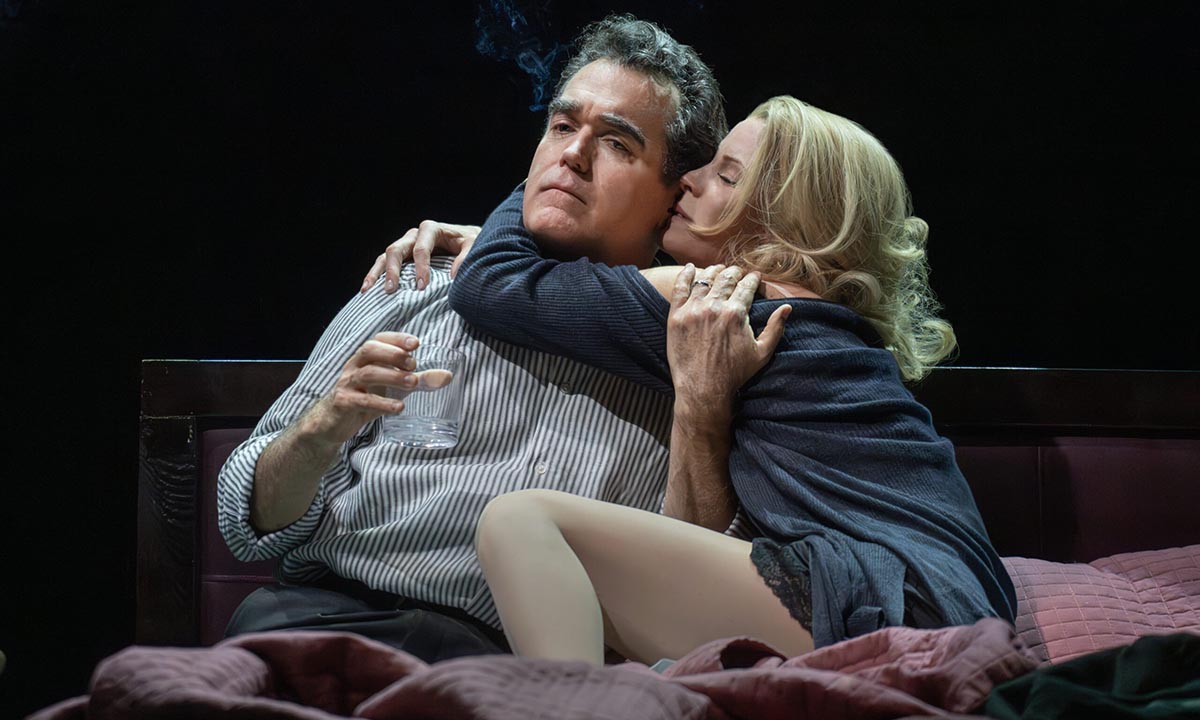
Days of Wine and Roses, Studio 54
An adaptation of the 1962 Blake Edwards film, Days of Wine and Roses opened off-Broadway at the Atlantic in mid-2023 but didn’t get anywhere near my list of the best theater of 2023. I’m still not exactly sure why this dark musical, charting the lives of two married alcoholics, came alive in its Broadway transfer at Studio 54. Perhaps it’s that Adam Guettel’s jagged but lush music requires repeated listens to make sense of its obfuscated wonders. Perhaps the luminous Kelli O’Hara and the deeply moving Brian D’Arcy James found more compelling levels of sorrow and hope to keep the show’s relentless currents alive. Or, perhaps, an addiction narrative is so unlike what we’re used to seeing on Broadway that a show without a satisfying resolution or a standard-issue dramatic arc required multiple visits to assert its own painful illogic.
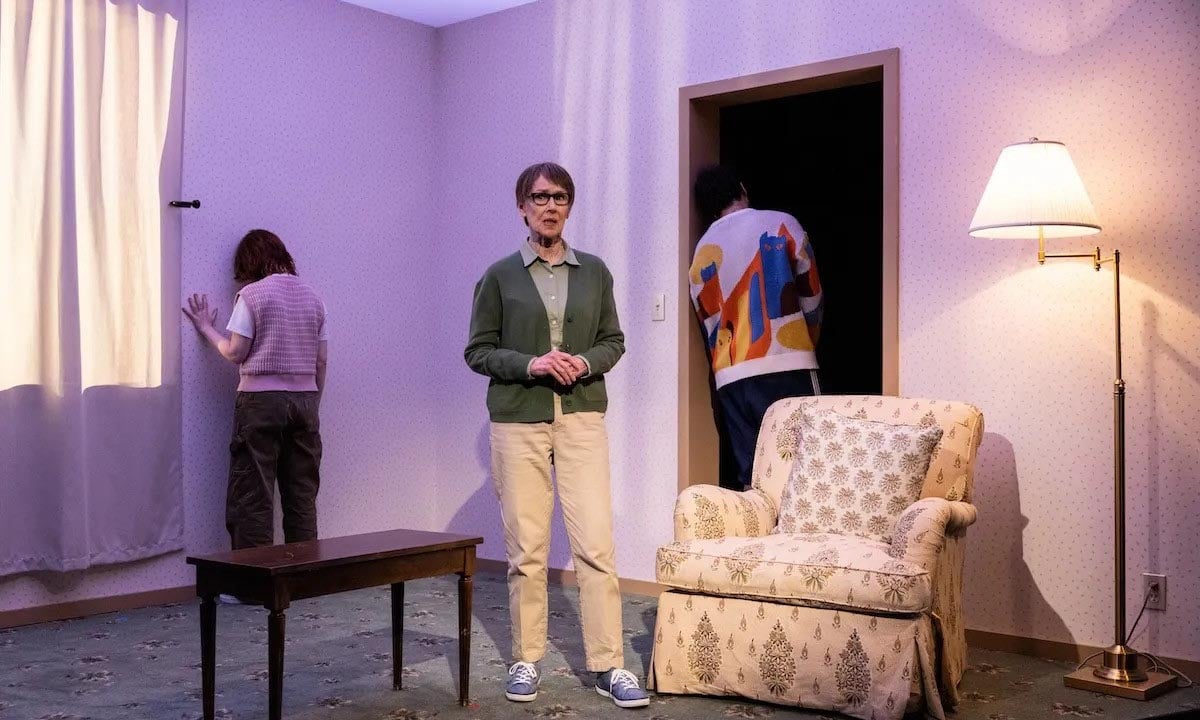
Grief Hotel, Public Theater
Some plays won’t stop haunting you months later. Grief Hotel spun out slowly in Tara Ahmadinejad’s arrestingly claustrophobic staging, the plot’s initial haziness giving way to sharp clarity piece by piece. Playwright Liza Birkenmeier’s characters are aggressively specific, both in the way they speak and in their handling of griefs and grievances both big and small, as in the memorable moment in which Teresa (Susannah Perkins) launches into a harangue about disliking dogs: “I don’t hate them. I always just feel absolutely fine and then someone adds a dog and I wish they wouldn’t.” And in a season chockfull of lavishly unfolding sets by the design collective dots, their surprisingly minimalist work here stood out.
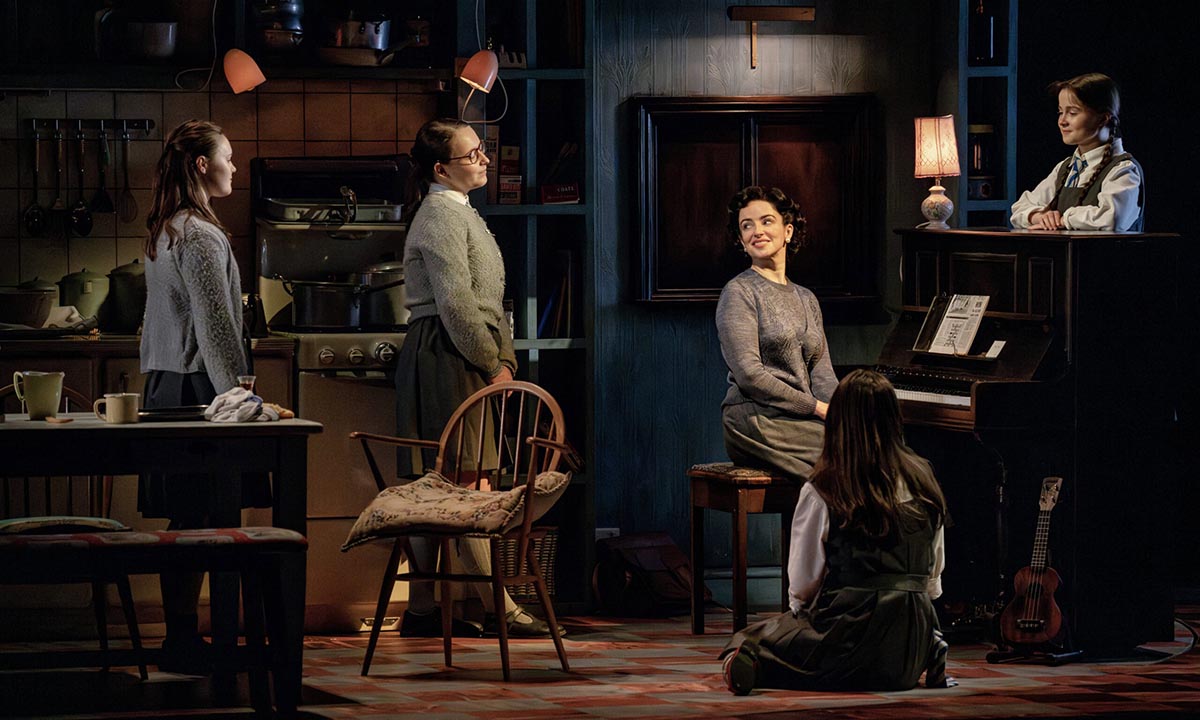
The Hills of California, Broadhurst Theatre
Across this massive production, meticulously staged by Sam Mendes, the past seeps into every space of a house as three sisters keep vigil while their mother dies agonizingly upstairs. Jez Butterworth flashes back and forth between 1955, when the sisters were young teenagers under the thumb of their demanding stage mother, and 1976, as they’re on the cusp of finally being free of her. Laura Donnelly gives an audaciously sweeping dual performance as the self-destructively steely mother in the flashback scenes and the prodigal fourth sister—fully unwound, loose, and droll—20 years later. Butterworth allows each character to emerge gradually, potently into focus, and though The Hills of California runs nearly three hours, its sense of bigness comes from the depths that it plumbs.
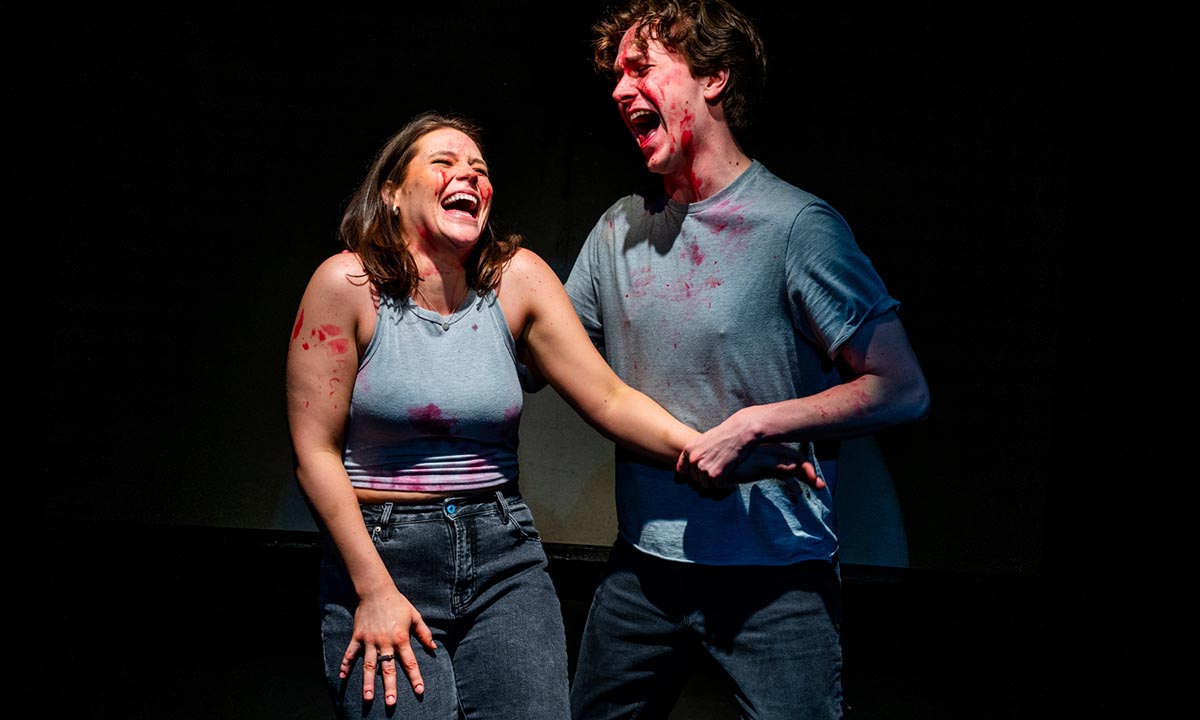
It’s Not What It Looks Like, Soho Playhouse
Sometimes you find the loveliest stories in the smallest rooms. Soho Playhouse’s Lighthouse Series winner in 2022 was Job, a two-hander that transferred to Broadway this summer. The following year’s winner, John Collins’s It’s Not What It Looks Like also deserves a bigger stage. Collins and Chesney Mitchell play cousins who begin the play under duress: They’re being interrogated by police about the piano they’ve just dropped fatally (and maybe accidentally?) on someone. Written and staged in staccato exchanges that keep tensions high, the often riotously funny play snuggles closer to tragedy as it goes on, revealing the layers of familial grief that undergird this relationship. It’s a taut, terrific playwriting debut that should resurface soon.
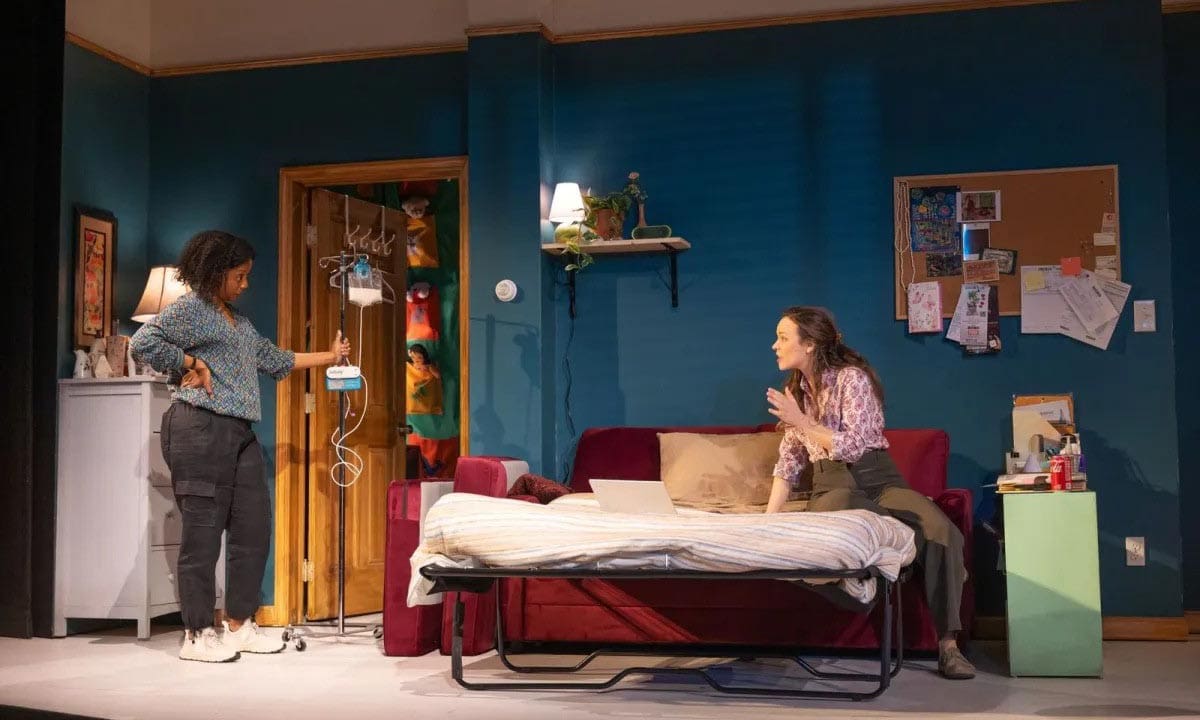
Mary Jane, Samuel J. Friedman Theatre
Amy Herzog’s semi-autobiographical, tenderly unsentimental portrait of a mother doing the best she can while raising a medically fragile toddler stunned with Rachel McAdams in the title role. Herzog surrounds the exhausted, inexhaustibly positive Mary Jane with a community of co-heroines, the home aides and landladies and fellow moms of kids with chronic health conditions who offer support. The ache of Susan Pourfar’s scene as the Chasidic parent of a hospitalized child remains particularly hard to shake loose. And, under Anne Kauffman’s gently devastating direction, Lee Jellinek’s coup de théâtre set change heartwrenchingly revealed how the hospital lurks omnipresently beneath every space a medically complex family occupies.
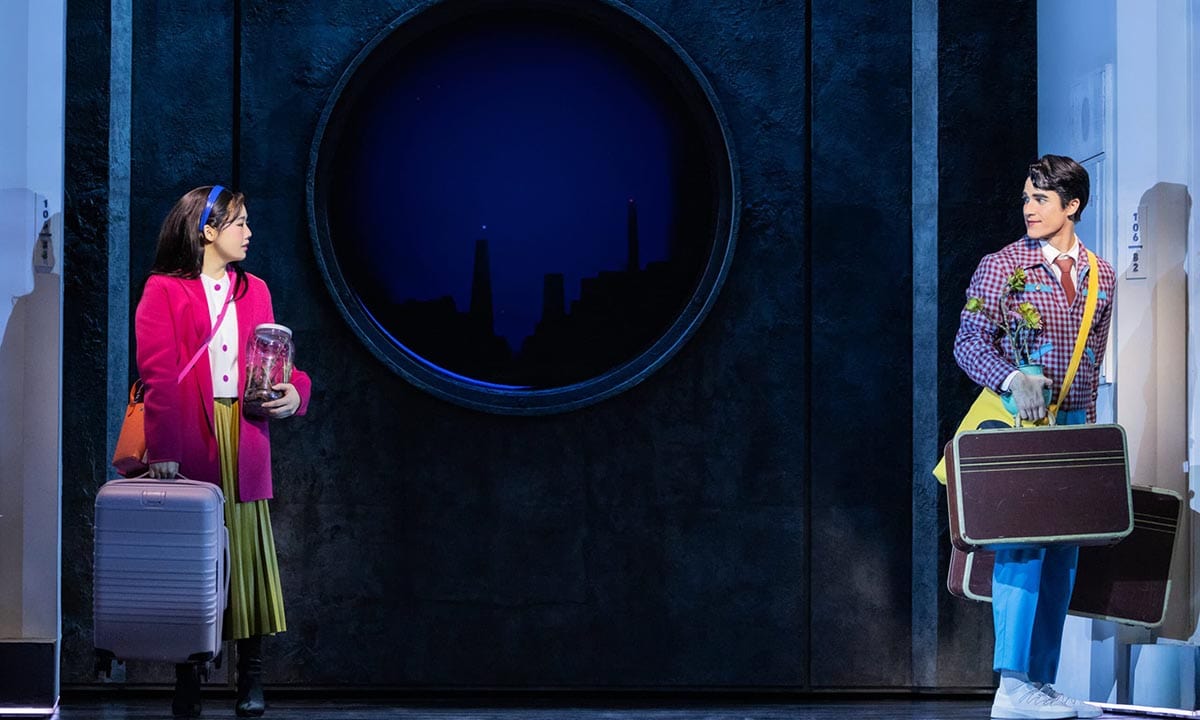
Maybe Happy Ending, Belasco Theatre
This lovely cyborg-centric musical with a miniature cast and a gigantic heart features the lushest score, from American composer Will Aronson and South Korean lyricist Hue Park, to reach Broadway in decades. Telling the story of two retired HelperBots (played with crisp charm and smoldering electric chemistry by Darren Criss and Helen J. Shen) who go from neighbors to frenemies to lovers, Maybe Happy Ending is a throwback, in a sense, laced with croony jazz touches to boot, but it induces a toasty nostalgia through the lens of a colder vision of the future. The show’s superpower rests in the shared commitment of all collaborators to make the very small seem very large, with director Michael Arden revealing the astonishing world of the musical piece by piece through the sliding sets that explode like comic book panels.
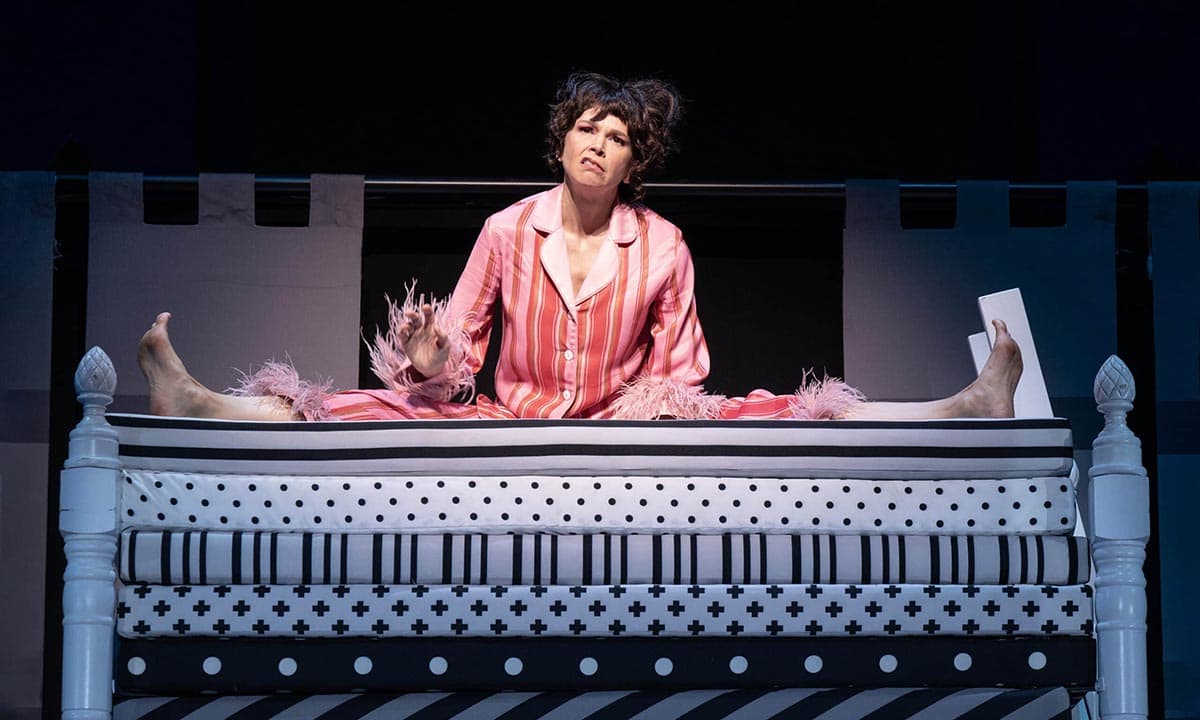
Once Upon a Mattress, Hudson Theatre
This crackerjack revival of the 1959 comic retelling of The Princess and the Pea opened the year at New York City Center’s Encores! before transferring to Broadway in late summer. As a giddy Princess Winnifred, the role originated by Carol Burnett, Sutton Foster was buoyantly alive and dazzingly reliable as ever. But Michael Urie, in transmogrifying the dopey Prince Dauntless, into an equal lead, convinces that the musical isn’t just about a spunky, scrappy princess succeeding against the odds but also a real love story between two moonstruck misfits. Once Upon a Mattress is sometimes seen as pure froth, but there’s real heart and wit beneath the foam, and the winning duo upheld the show’s reputation—especially its goofy-gorgeous score by composer Mary Rodgers and lyricist Marshall Barer—as a quick-witted, toasty-warm gem.
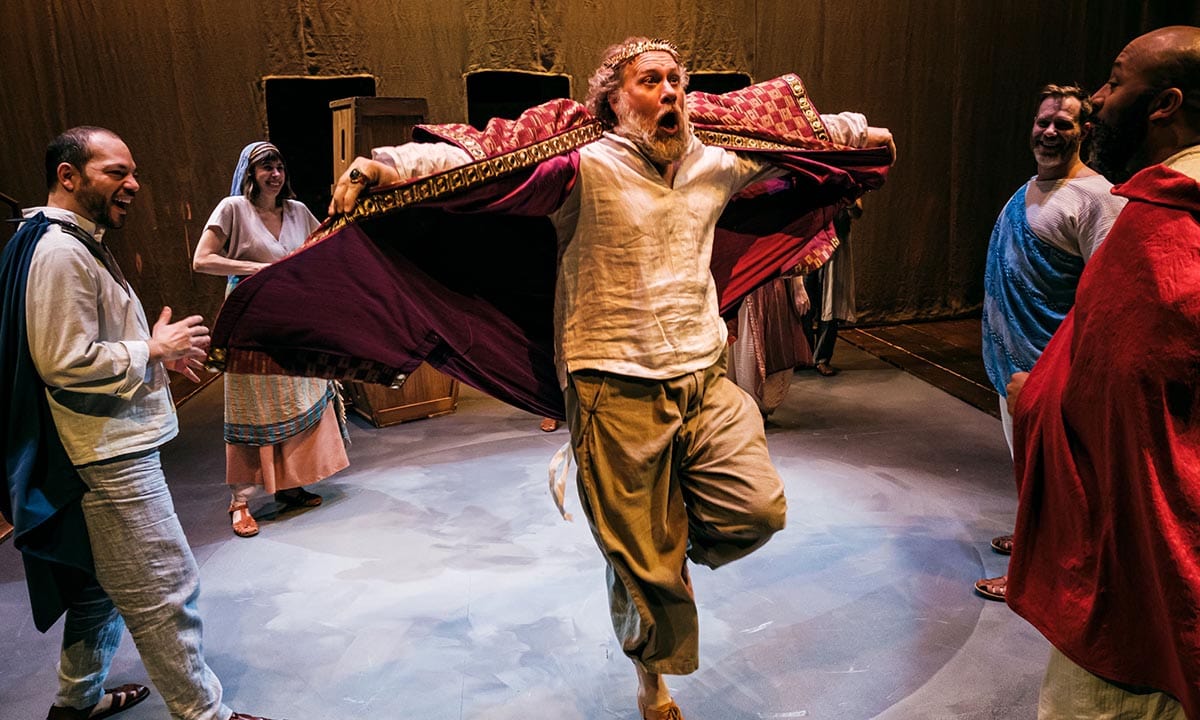
Pericles, Classic Stage Company
Fiasco Theater’s Pericles was a revelation, a revivification of New York theater’s most essential ensemble and a redemption for a play seldom produced and even less seldom praised. Time flew in this joyous take on one of William Shakespeare’s strangest works, directed simply but never simplistically by Ben Steinfeld. The company relishes the raunchy underbelly of Shakespeare’s worlds, and co-artistic director Jessie Austrian is the company’s supreme juggler in two roles here, balancing the bawdy and the beautiful from scene to scene. What Fiasco does so stunningly well is to elucidate contemporary meaning from older texts by digging deeply into the language and practically repotting it, inviting the words to sprout from fresh soil.
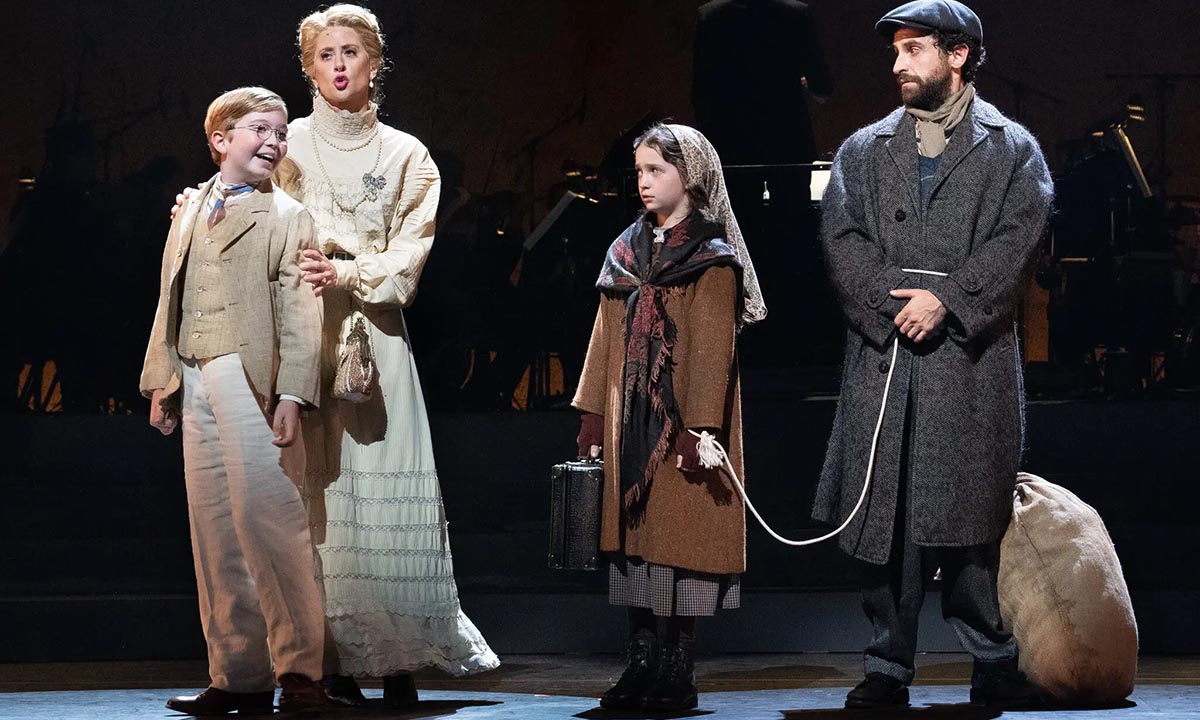
Ragtime, New York City Center
There’s no better musical theater score in the last 30 years than the one Lynn Ahrens and Stephen Flaherty wrote for Ragtime, with a potently, poignantly constructed book by Terrence McNally that, with newly sharpened resonances, challenges us to confront at once the past and present of America. The songs have seldom been performed with greater passion and panache than in this semi-staged production, and the pairing of Joshua Henry’s silken baritone and Nichelle Lewis’s keening soprano made Ragtime seem like “new music” once again. Ragtime also boasted a thoughtfully selected supporting cast, with the anarchic energies of Shaina Taub’s Emma Goldman and Ben Levi Ross’s Younger Brother particular highlights. And what better way for Lear DeBessonet to kick off her upcoming tenure as artistic director of Lincoln Center Theater than to bring this production, perhaps more fully staged, to Broadway next season?
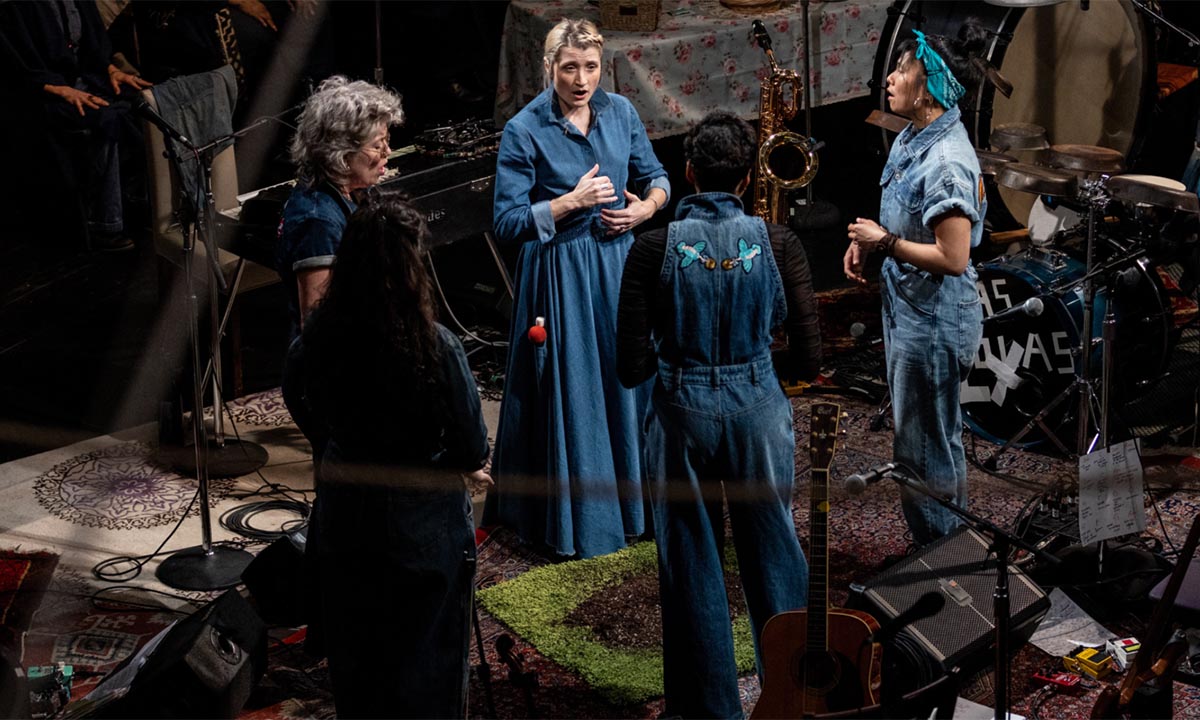
Terce: A Practical Breviary, The Space at Irondale
When Heather Christian’s in town, watch out. No composer’s better at creating a sense of musical community through choral-driven storytelling or fusing myriad styles, from bluesy riffs to medieval polyphony. This brief, glorious iteration of her magnanimous talent (Christian wrote the text and music, sang, conducted, played instruments, and danced) featured dozens of caregivers and artists, mostly amateur singers, who had prepared the piece over a year of collaborative rehearsals. Part of an ongoing ritual series across mediums striving to secularize the traditions of the Catholic breviaries, Terce: A Practical Breviary offered a few early morning performances in Irondale’s cavernous hall, and when the early sunlight streamed directly down on the performers through huge windows, it seemed like a glimpse of the divine.
Since 2001, we've brought you uncompromising, candid takes on the world of film, music, television, video games, theater, and more. Independently owned and operated publications like Slant have been hit hard in recent years, but we’re committed to keeping our content free and accessible—meaning no paywalls or fees.
If you like what we do, please consider subscribing to our Patreon or making a donation.

